The Need for Bridging in Latter-day Saint Communities
Plus a recap of our family road-trip to the Olympic Peninsula
You’re reading From the Desk, a monthly newsletter from Miles Farnsworth about the arts, spirituality, and living the good life. Scroll to the bottom to see Recs from the Desk and 5 Photos from the Last Month.
Also at the bottom, you’ll see a quick trip recap from our family vacation to the Olympic Peninsula.
Just a heads up, this month’s newsletter is very focused on Latter-day Saint culture.
Consider subscribing to read From the Desk in your inbox.
A few months ago, I was called as the ward mission leader in my congregation. Compared to other assignments, the ward mission leader’s focus rests partially outside the congregation, assisting the missionaries as they teach and invite friends to the Church.
At the same time as I received this assignment, I was reading Bowling Alone, Robert Putnam’s 2000 work on social capital. The book outlines the decline of civic engagement in the United States and offers compelling insight into the many roots of our growing disconnectedness as a society. After World War II, America became more communal, with formal and informal volunteer, political, religious, and other groups rapidly growing, followed by an almost universal decline in socialization in the 1970s until the time the book was published. Though it’s been 25 years and society has experienced the downstream effects of the internet and social media, Putnam’s thesis is still relevant, as are many of the frameworks he outlines.
One framework in particular caught my attention, especially with my assignment as ward mission leader; that is, the way we build community groups. Putnam describes two primary means of socialization: bridging and bonding.
Bridging, as the word implies, is outward-looking. Putnam calls bridging the WD-40 in a society. Bridging is inclusionary, enabling us to get to know others we may not otherwise associate with, be it across religion, race, class, etc. Examples of bridging include interfaith groups, neighborhood councils, and parent-teacher associations.
Bonding, on the other hand, is inward-looking. Putnam refers to this as superglue. It’s most common in groups that share an important identifier like families, churches, support or veteran groups, and fraternities/sororities.
When you read those two descriptions, which form of community building do you think Latter-day Saints excel at? My gut answer is bonding. The structure of our church units, with formalities like ministering assignments, callings, and youth activities, helps increase our bonds. Anyone who’s moved across the USA knows how valuable these bonds can be. Moving to a new congregation immediately grants access to volunteer opportunities, social engagements, and often new friends.
Data shows that Latter-day Saints demonstrate strong bonds. In a 2010 follow up to Bowling Alone, Putnam goes deeper into the subject of religion in his book American Grace and shares that Latter-day Saints have one of the highest retentions rate among children born in the faith (55%), one of the lowest interfaith marriage rates, and some of the most non-diverse friendship and family networks. Utah ranks very high on social capital indexes thanks to above-average church attendance, volunteering (usually volunteering for Church assignments), and charitable giving (tithing).
But what about bridging? Are we worse bridge builders than we are bonders? Here again, we can point to formal and informal bridging structures in the Church. Formally, our missionaries go throughout the world preaching, baptizing, and bringing new members into our communities. Informally, Latter-day Saints interact daily with individuals outside our faith at work, school, and elsewhere.
If we look at Church growth rates as a metric of successful bridging, you find that membership in our Church roughly mirrors the same pattern Putnam found across other communities. Whereas in the 1960s we averaged close to 6% annual growth, with multiple years above 7% growth, the Church hasn’t seen a growth rate above 3% since 1999.
Are growth rates a product of formal or informal bridging? Well, since we have more missionaries than ever but a smaller growth rate, I’m inclined to say informal bridging is more effective. Unfortunately, our informal bridging falls subject to all the factors Putnam lays out in Bowling Alone. A general decline in civic engagement across the board affects the amount of time Latter-day Saints spend outside our immediate religious community. We’ve maintained our ability to bond, but experienced the same behavioral and societal changes that have reduced bridging.
Imagine two Latter-day Saint families living outside the Mountain West, one living in the 1960s and one living in the 2020s. In the 1960s, this Latter-day Saint family was perhaps the only one in their neighborhood. While they interacted with their congregation regularly, they were likely involved in a myriad of other civic pursuits, belonging to different clubs, volunteering in different non-profits, and engaged in local politics. After all, as Putnam notes, religious folk are many times more likely to be civically engaged than their non-religious peers. Through the lens of missionary work, it seems that this sort of community involvement, the chance to rub shoulders with people from different walks of life, would have been conducive to sharing the gospel.
Now imagine that same family in 2025. Even outside the Mountain West, they probably live in closer proximity to other Church members than their 1960s dopplegangers, meaning they don’t have to travel as far to attend church, and if they choose, they have more fellow Church members to associate with for their circle of friends. Both parents probably work and don’t belong to any organizations or clubs that require in-person involvement outside of work or the home. Even though they might work with a diverse group, religion is increasingly taboo, and they aren’t best friends with their coworkers, anyway. The kids' extracurriculars keep the parents busy, and while they know other parents, the friendships are surface-level and centered on the extracurricular. Their church callings require a few hours a week, and they feel they have no free time for anything else. All in all, the bridging opportunities are much more infrequent than they were 60 years ago.
While we’re busy going about our lives, our missionary force, mostly 18-19-year-olds who will spend six months at most in our congregations, are tasked with bridging ties outside the Church. Missionary work goes best when the members have someone to refer. Can you think of anyone? I know my social life mostly revolves around Church, and I’m not making friends at work or elsewhere with the express desire to convert someone.
Anecdotally, in the congregations I’ve lived in outside of Utah, most converts seem to join after a random encounter with the missionaries. I hesitate to say this is always true, and would love to see data that showed the origin of our new converts. Were they approached by members? Missionaries? How many interactions did it take? (I’ve often heard it takes seven interactions, but is that true?)
Of course, bridging isn’t just about converts and growth. It’s also worth considering the state of our integration in society. As a Church, are we more or less accepted in society today? Are our beliefs better or less understood? Do we have better relationships with other faiths than we did 60 years ago? I’m inclined to say yes in the absence of any real data.
Caught as we are in these broader societal trends, Latter-day Saints have the opportunity to be different. I’d like to put forth three thoughts about bridging.
First, one cannot be the “salt of the earth” or the “leaven” of society if not actively engaged with the world beyond the bounds of our congregations. We should strive to be neighborly and communal outside the church. It feels inappropriate to suggest this merely with the hopes that more people join the Church, yet we should engage with the world because we love our fellow man, because we care about the health of society, and because our lives are richer when our circles of association are strong.
Second, Latter-day Saints should have an expansive interpretation of the law of consecration. Our attempts to use our time, talents, and resources to build up the Church shouldn’t limit our efforts to our congregation. If our capabilities and resources can strengthen our communities, part of our consecration can be to serve others, whatever that looks like. While this may not provide an immediate benefit to our church, if it helps God’s children, is not this building His kingdom?
Finally, and perhaps experimentally, what if we were to look at Church callings that weren’t focused on bonding but instead focused on bridging? Stakes often have PR, service, or interfaith relationship callings. But at the ward or branch level, what if similar callings were extended or new positions created? What if ward activities were planned specifically to invite someone else? What if youth programs were expanded to the community at large? It sometimes feels like bridging is left to the Church media department in Salt Lake and distributed top down. More autonomy could be given to local congregations to utilize members, resources, and time to serve local communities.
Let’s not let our congregational bonding and all the obligations of church service turn into a retreat from society lest it become another bushel under which to hide our candles.
Olympic Peninsula Trip
Since I don’t post to social media very much, I have to do my photo dumps here! The Olympic Peninsula was amazing. Washington is such an odd state, geographically. If you drive from Spokane across its entirety, you start in a high desert ponderosa forest, cross through fairly arid plains on the Columbia Plateau, cross the Columbia, climb through the forested yet dry eastern foothills of the Cascades, pass through towering peaks in the mountain passes, drop into the lush forests of Western Washington, and finally reach the coastal mountains and beaches of the peninsula. It’s a wild transition.
Mickelle and I end up doing a fair amount of “pop-culture” touring. I wouldn’t say we’re very steeped in pop-culture, but somehow our road trips have taken us to Scranton, PA, to see sites from The Office, Western Connecticut to see the small towns that inspired Gilmore Girls’ Stars Hollow, and eaten at the Seinfeld cafe in NYC (Tom’s Restaurant). To kick off this trip, we stopped in North Bend and Snoqualmie, the inspirations for Twin Peaks, and ate at what was the R&R Diner and visited the falls featured prominently in the opening credits and other cut scenes.
Later that day, we made it to Port Angeles and drove up Hurricane Ridge in Olympic National Park. The top was fairly snow-covered, so no hiking, but the capped peaks were stunning.
The following day, we caught an early ferry to Victoria, British Columbia, Canada. It’s only a 90-minute ride across the strait. Ferries have such great vibes. Tasteful colors inside, awesome lighting, great smells. Victoria is charming. It reminded me a lot of New Zealand with the temperate climate, coastal foliage, and British influence.
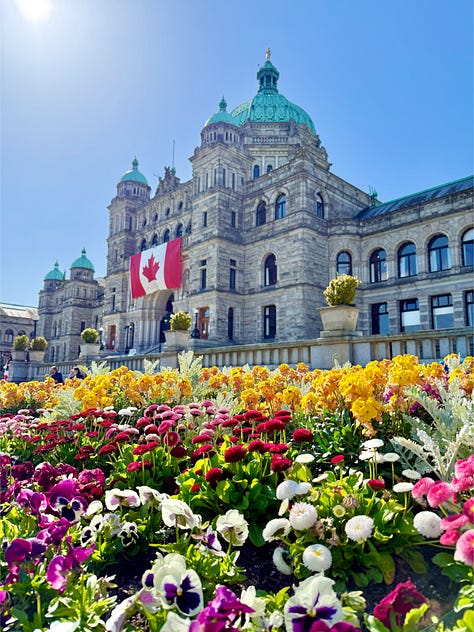
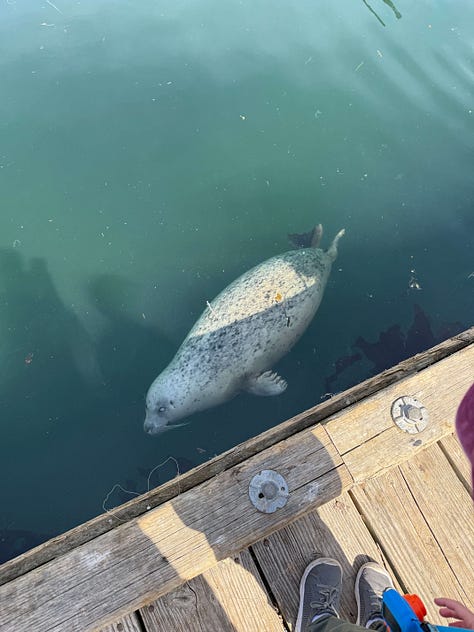
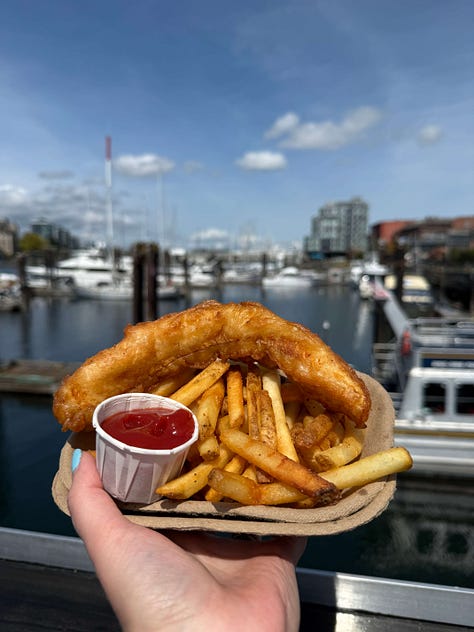
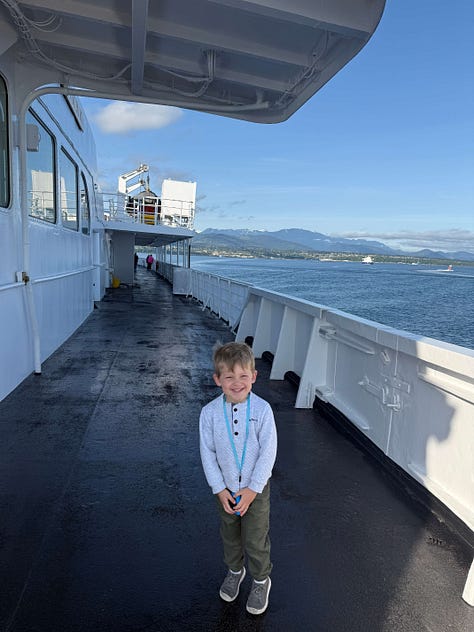
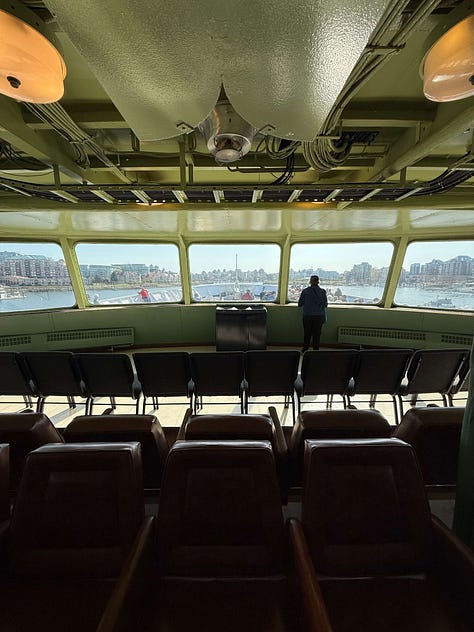
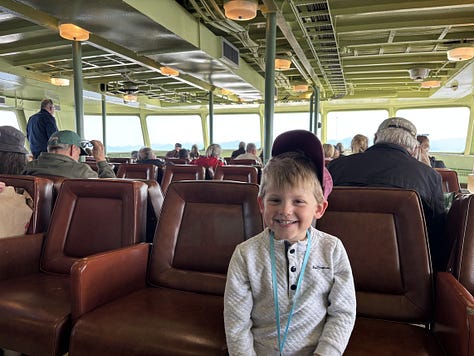
Since the weather was cloudless, we made for the coast the next day, driving across the north side of the Peninsula, through the town of Forks (more pop-culture touring for Mickelle, who visited a lot of Twilight spots), and out to Second Beach (home to tidepools with starfish, anemones, and crabs) and First Beach near La Push. Later that night, I drove back out to Rialto to catch the sunset.
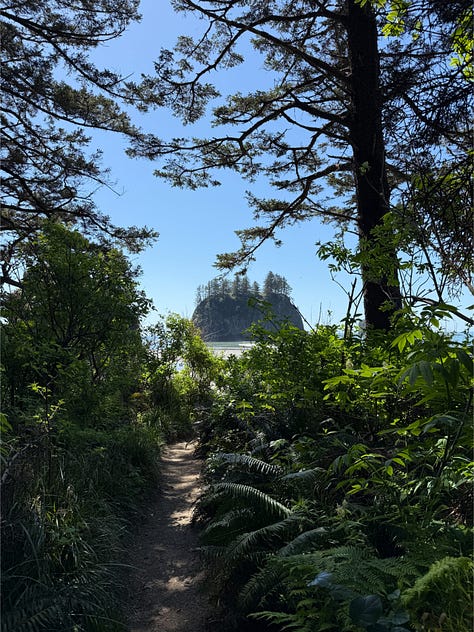
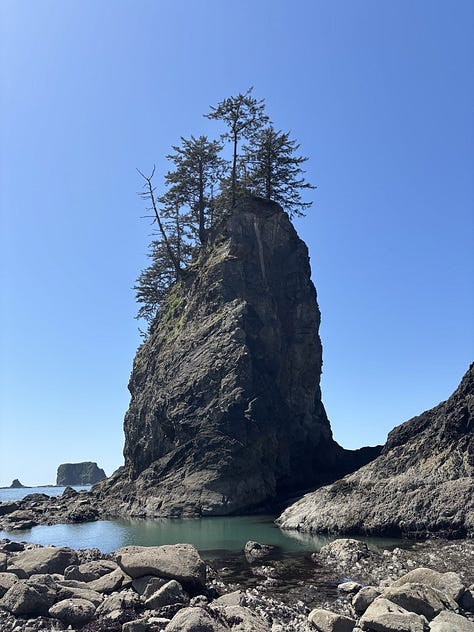
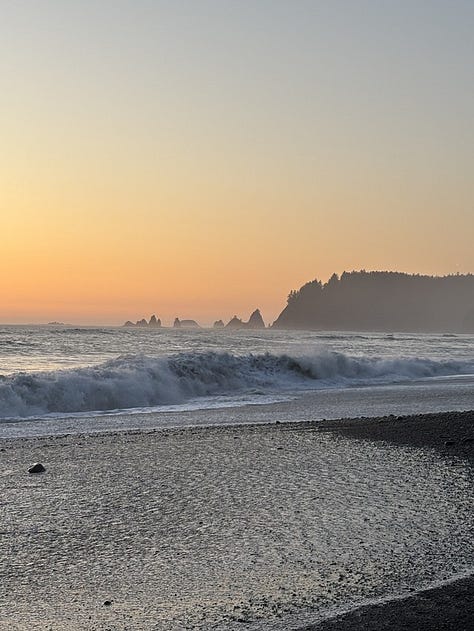
We backtracked to Lake Crescent and the Sol Duc area the following day for some of the rain forest vibes (the Hoh was closed). Later that afternoon, we went back to Rialto and La Push in the rain and ate a great dinner on the Native American Reservation at First Beach.

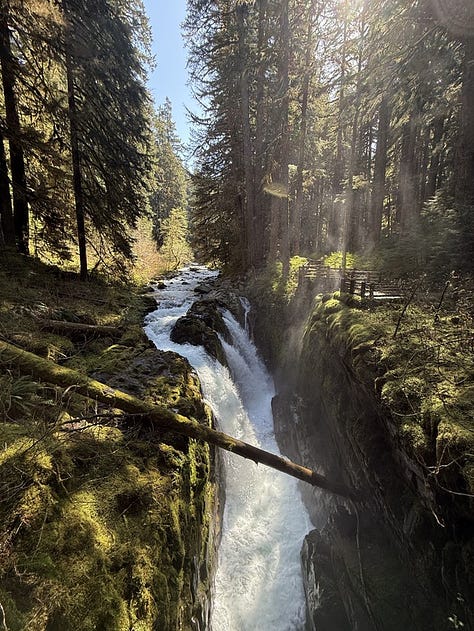
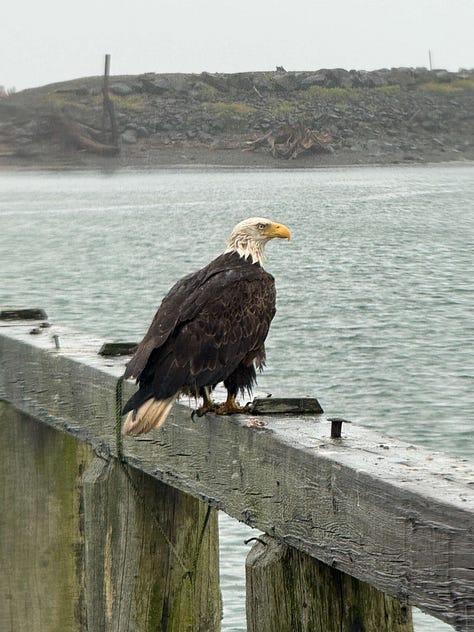
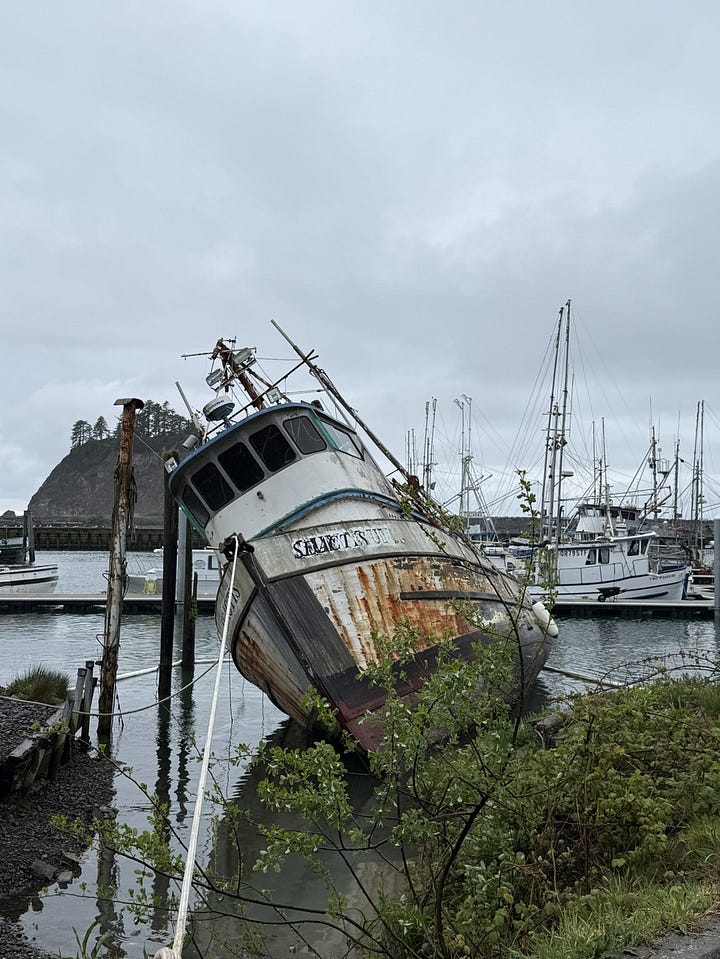
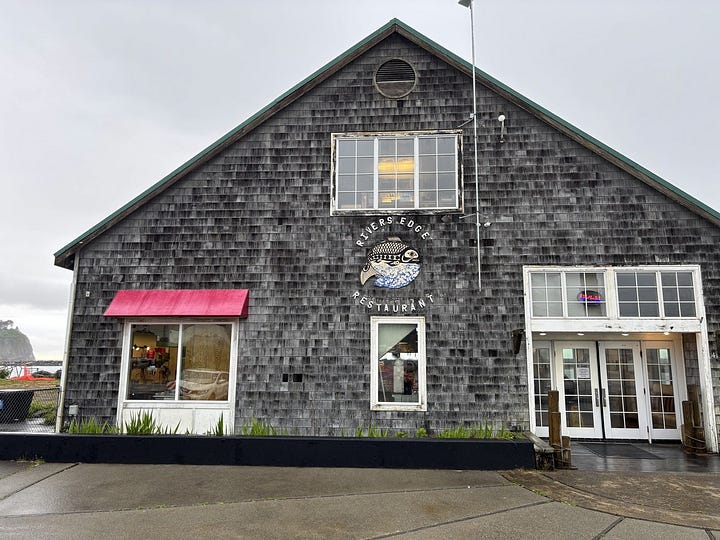
Overall, a remarkable trip, one for the scrapbook. We feel more like real Washingtonians. I think in another life I was an ocean fisherman. Something about those PNW beaches really gnaws at the soul.
Something to help your writing: These screenwriting tips from Howard Hawks were awesome. I’m not very familiar with his body of work, but it makes me want to go back and watch his films.
Something for the geography nerds: This map gives a nice visual of the steepness of any latitude/longitude. You can use the explore function to find specific mountains, and it will spit back the steepness and the best spot to get the most dramatic view of the peak.
Something for the soccer fans: Why the MLS sucks. This is not a novel take, though the reasons listed give important context for the ways the very structure of the league limits its success.

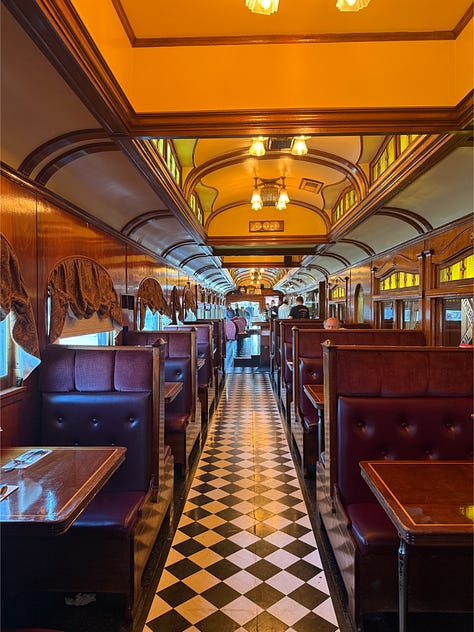
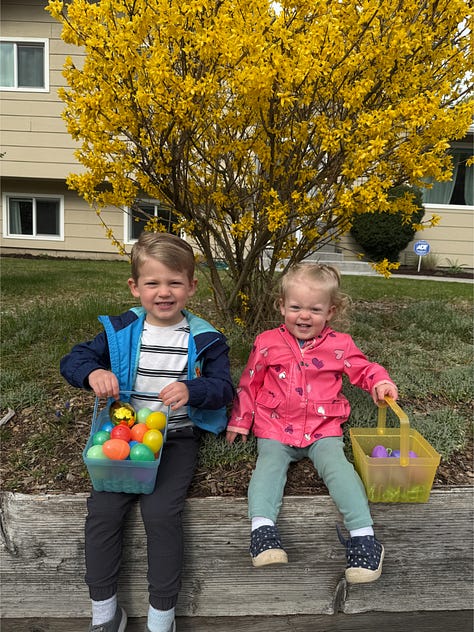
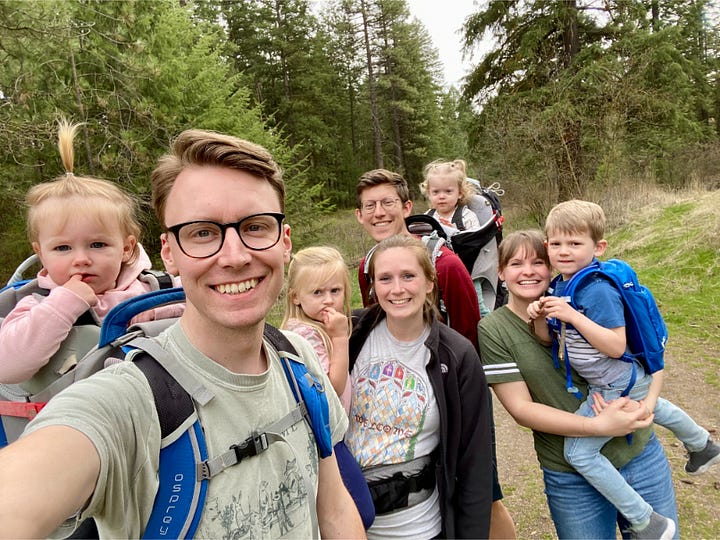


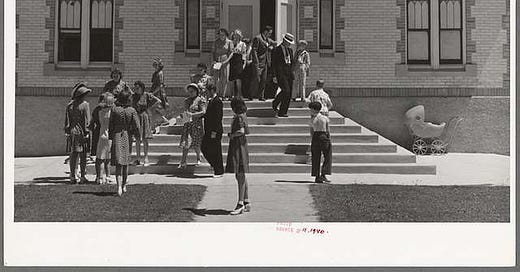



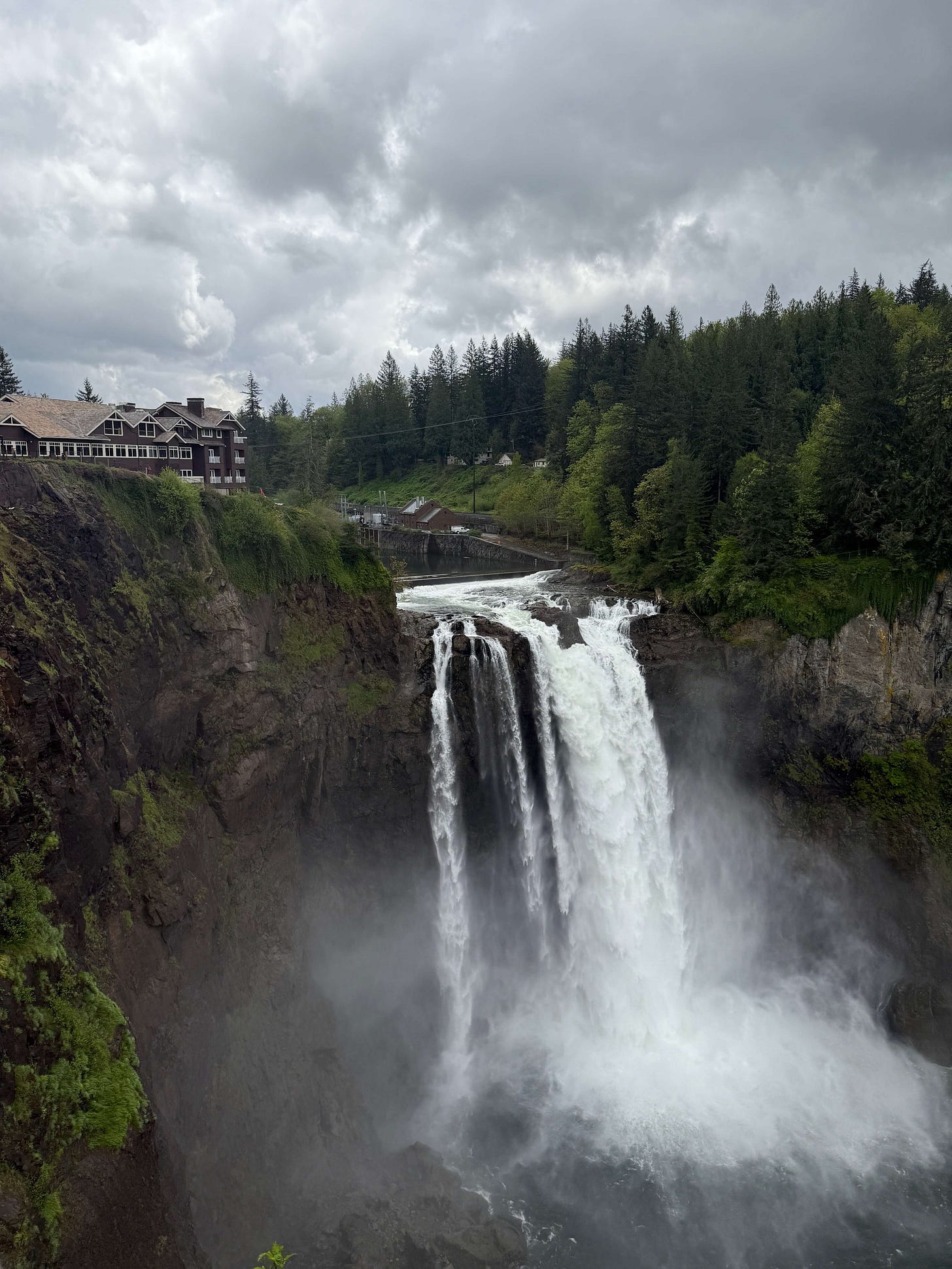



"If our capabilities and resources can strengthen our communities, part of our consecration can be to serve others, whatever that looks like." I love the idea of building His Kingdom without borders!! Coupled with your previous point, engaging in the world outside my congregation in unified service has fostered treasured friendships in my life. Thanks Miles!
“What if ward activities were planned specifically to invite someone else?”
They should have always been events welcoming to everyone. And just as importantly, they should be happening regularly! These two are not both true often enough.